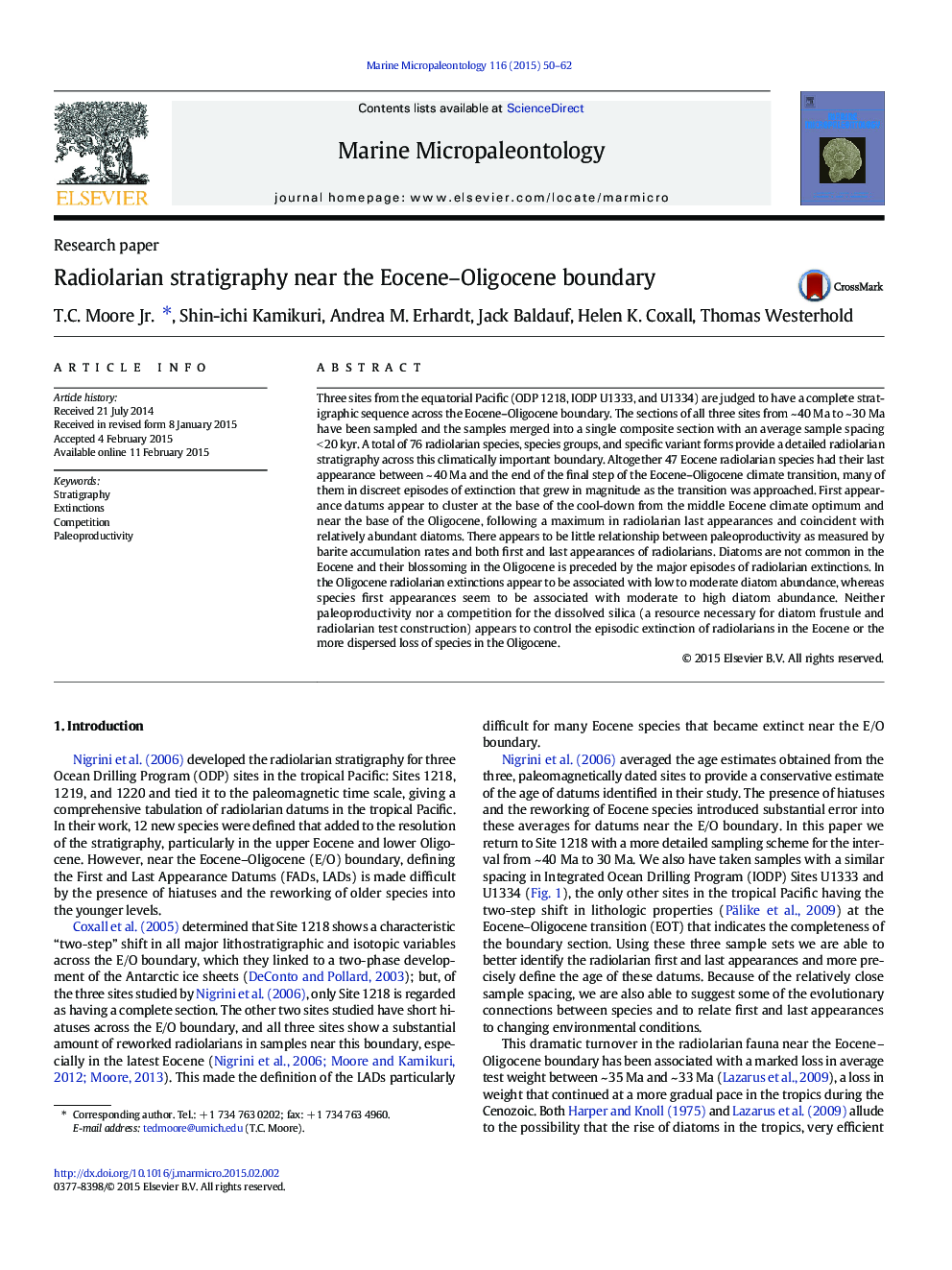| کد مقاله | کد نشریه | سال انتشار | مقاله انگلیسی | نسخه تمام متن |
|---|---|---|---|---|
| 4748794 | 1642169 | 2015 | 13 صفحه PDF | دانلود رایگان |

• Forty seven radiolarian species and variant forms became extinct in a series of extinction episodes in the late Eocene.
• Radiolarian extinction episodes precede peaks in diatom abundance and are unrelated to a blossoming diatom flora.
• First appearances of radiolarian species are most numerous just above the MECO and just above the E/O boundary.
Three sites from the equatorial Pacific (ODP 1218, IODP U1333, and U1334) are judged to have a complete stratigraphic sequence across the Eocene–Oligocene boundary. The sections of all three sites from ~ 40 Ma to ~ 30 Ma have been sampled and the samples merged into a single composite section with an average sample spacing < 20 kyr. A total of 76 radiolarian species, species groups, and specific variant forms provide a detailed radiolarian stratigraphy across this climatically important boundary. Altogether 47 Eocene radiolarian species had their last appearance between ~ 40 Ma and the end of the final step of the Eocene–Oligocene climate transition, many of them in discreet episodes of extinction that grew in magnitude as the transition was approached. First appearance datums appear to cluster at the base of the cool-down from the middle Eocene climate optimum and near the base of the Oligocene, following a maximum in radiolarian last appearances and coincident with relatively abundant diatoms. There appears to be little relationship between paleoproductivity as measured by barite accumulation rates and both first and last appearances of radiolarians. Diatoms are not common in the Eocene and their blossoming in the Oligocene is preceded by the major episodes of radiolarian extinctions. In the Oligocene radiolarian extinctions appear to be associated with low to moderate diatom abundance, whereas species first appearances seem to be associated with moderate to high diatom abundance. Neither paleoproductivity nor a competition for the dissolved silica (a resource necessary for diatom frustule and radiolarian test construction) appears to control the episodic extinction of radiolarians in the Eocene or the more dispersed loss of species in the Oligocene.
Journal: Marine Micropaleontology - Volume 116, April 2015, Pages 50–62